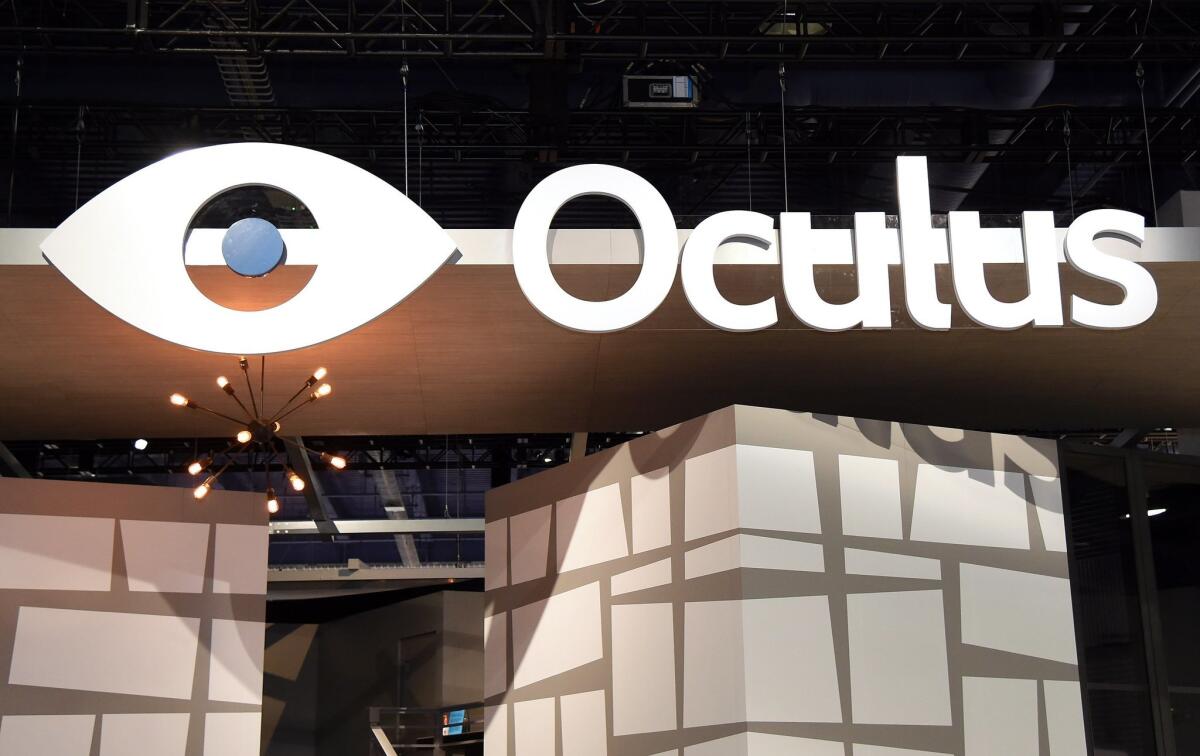Sundance 2015: Virtual-reality company Oculus to launch film label

Reporting from Park City, Utah — Virtual-reality firm Oculus is making a move into original film content.
The manufacturer of the much-anticipated Rift headset is expected to announce at the Sundance Film Festival on Monday that it is launching a new unit called Story Studio and has hired Pixar veteran Saschka Unseld to run it.
Working with a team of about 10 staffers and contractors, Unseld will develop and produce an unspecified number of animated shorts in the VR format. VR essentially allows a viewer wearing a headset to inhabit a film’s entire world, instead of the more traditional method of simply watching a rectangular display.
The move is a small but notable step in the bid to bring the nascent technology into the Hollywood mainstream. Oculus has worked extensively with the game community to develop VR content, but conversations with film and television figures have up to this point been largely hypothetical.
“We felt the 360-side of filmmaking has been covered,” said Oculus CEO Brendan Iribe in a phone interview, referring to live-action cinema. “What hasn’t been explored is the animated side.”
Virtual-reality film content lends itself more easily to animation than live-action film shoots, where an entire world must be created and controlled at once, as opposed to animation’s more piecemeal approach.
The movies will be made exclusively for Oculus’ VR platform and will not come in a traditional 2-D or 3-D format, Iribe said.
VR allows for a larger degree of interactivity than traditional cinema--paths can be explored and characters may materialize depending on where a viewer chooses to look.
Story Studio’s movies, however, will wade slowly into those waters.
“We’re keeping the interactivity low for our first time out to give it more of a cinema experience,” said Unseld, referring to the first short, which will be unveiled to the media at Sundance on Monday evening.
At Pixar, Unseld worked on movies such as “Toy Story 3” and “Brave” as a layout artist and also created the short “The Blue Umbrella,” a whimsical piece about two umbrellas finding love that ran before “Monsters University.” It is unclear if he would work with accredited directors to create the shorts or take a lead helming role himself.
Technology companies have embraced original content in recent years, with Netflix and Amazon backing original TV shows in the hope of popularizing their platform. The Irvine-based Oculus, which is owned by Facebook, has similar aims for the Story Studio initiative, hoping it will attract new consumers while also generally advancing the cause of original VR content.
Though the move is the first such step for Oculus, original VR content is not new. Filmmakers such as the French Canadian duo Felix and Paul and the multimedia artist Chris Milk have been developing content for the Rift, and some filmmakers have also made live-action shorts for Google Cardboard, a format in which consumers can mount a homemade apparatus on a stereoscopic phone for a similar VR experience.
A number of other virtual-reality projects are on display at Sundance, including an original tie-in piece for the award-season release “Wild” directed by Felix and Paul.
The Rift is not yet being mass-produced. A version of the headset is currently being sold for developers; a joint effort with Samsung called Samsung Gear VR allows users to experience the technology via that company’s next-generation phones. A consumer version of the Rift could be available as early as this year.
The decision to make films for VR is fraught with uncertainty, not only because so few viewers will be able to see them, but because the medium is so radically different from traditional cinema.
Though many compare film’s VR movement to the 3-D advances of the past decade, there are a number of significant departures, from filmmaking methods (traditional editing, for example, is largely moot) to the manner of viewing, which is more consuming and more isolated.
And then there’s the fact that VR is an expensive--and, for many consumers, potentially dizzying--viewing experience.
Those at the movement’s fore say that it is hard to know how much is possible, or what will work, right out of the gate. But they hope that initiatives like Oculus’ will begin to shed light on the process.
“The only way to truly learn how to do immersive films,” Unseld said, “is to do immersive films.”
More to Read
Only good movies
Get the Indie Focus newsletter, Mark Olsen's weekly guide to the world of cinema.
You may occasionally receive promotional content from the Los Angeles Times.











